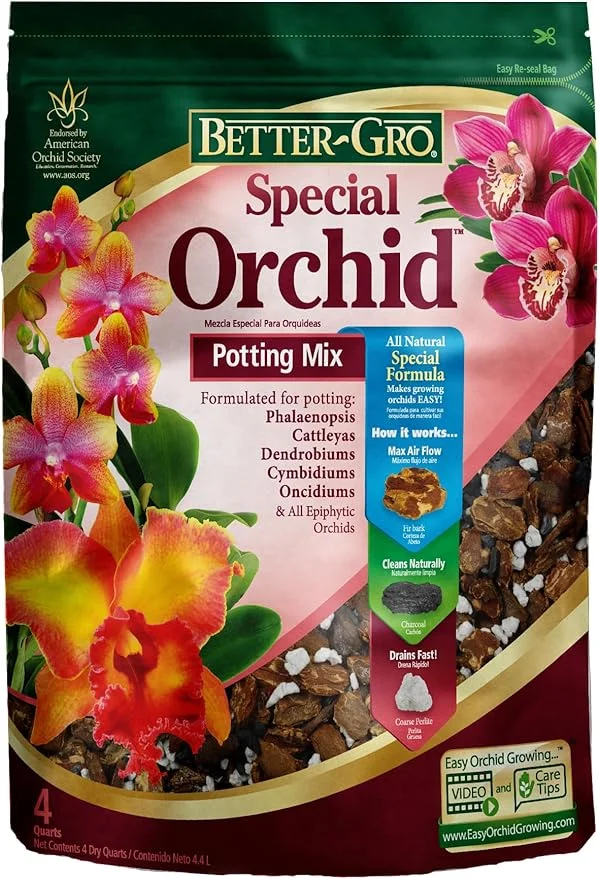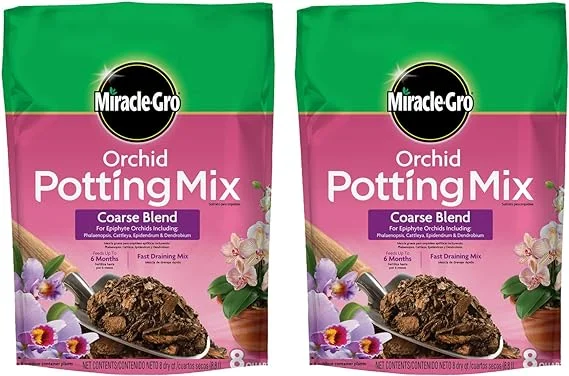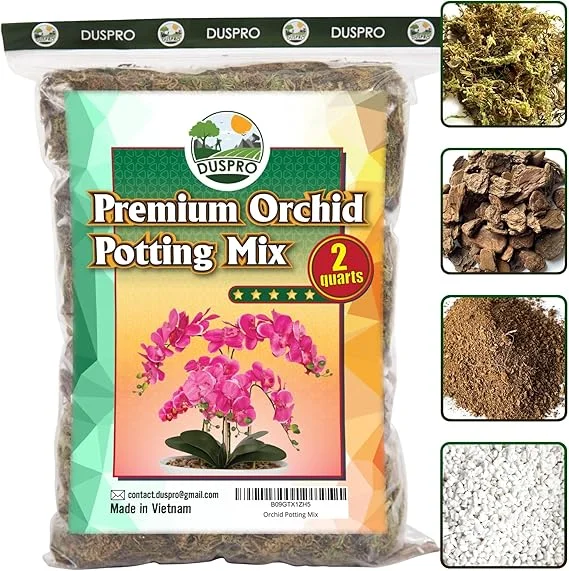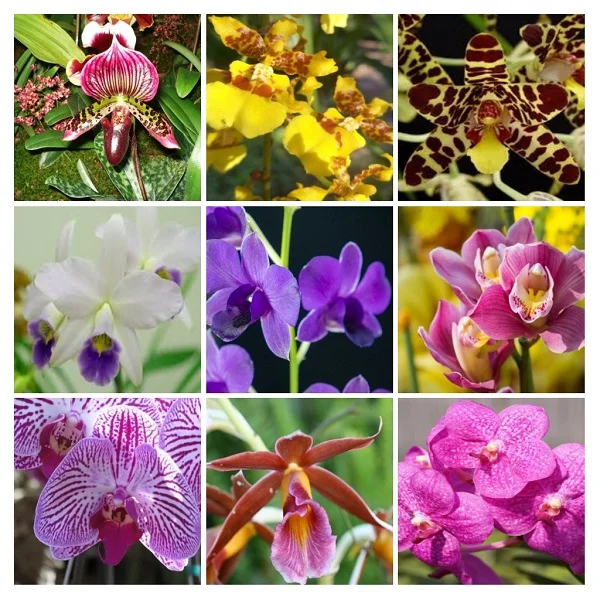How to Grow and Care for Pink Quill Bromeliads (Green Tillandsia) Indoors
Some links in this post may be affiliate links
Pink Quill Bromeliad (Green Tillandsia) thrives in bright light away from direct sunlight, average warmth, high humidity and consistently moist, fertile, well-drained soil coupled with regular feeding in the growing season.
Green Tillandsia also called Blue-flowered Torch is one of the popular Bromeliads varieties. It bears a long-lasting, long, flattened, flower-head with pink bracts and blue flowers.
The usual pattern is a rosette of leathery, strap-like foliage and flower-head which arises on a stalk from the cup-like center of rosette.
The leaves in Green Tillandsia are covered with specialized cells called trichomes capable of rapidly absorbing water and nutrients that gathers on them.
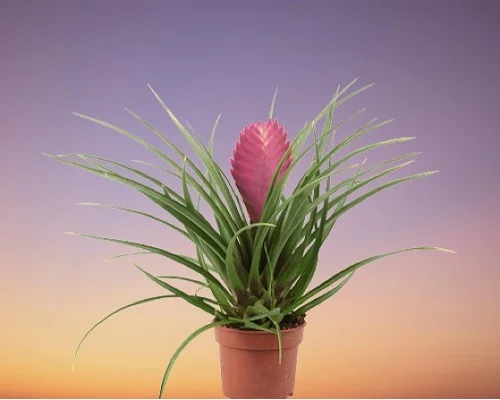
Botanical name: Tillandsia
Family: Bromeliaceae
Sufamily: Tillandsioideae
Common names: Pink Quill, Blue-flowered Torch
Origin
Pink Quill Bromeliads are native to the American Jungle, where they dwell among the Orchids in trees or on the forest floor.
Flower
The Blue-flowered Torch Bromeliads flower when mature usually after about 3 years. The flower-head is about 9-12 inches long and can last up to 3 months.
Once the flower-head fades, the rosette of leaves begins to die and is replaced by offsets (pups) at the base. The display of the flower head is due to the presence of long-lasting showy bracts; true flowers are small and short-lived. Green Tillandsia is among the best indoor flowering plants.
Varieties
The most popular Green Tillandsia are Tillandsia lindenii (Blue-flowered Torch) and Tillandsia cyanea which has a more compact flower-head with flowers which are all-blue.
Unlike the Grey Tillandsia (Air Plants), these Tillandsia Bromeliads often referred to as Green Tillandsia, bear green grassy leaves and large flowers.
Are Pink Quill Bromeliads toxic?
No. Pink Quill Bromeliads are non-toxic to humans and pets. The plants are safe for cats, dogs and other pests. However, the leaves bear short spines which may cause physical injury if handled with bare hands. Always wear gloves when handling these Bromeliads to prevent injury.
Where to Buy
Are you looking to acquire these magnificent plants? Pink Quill Bromeliads in various sizes are available online on Etsy (Link to Etsy).
How to care for Pink Quill Bromeliads indoors
Caring for Pink Quill Bromeliads indoors, entails providing bright light, average warmth of 18-280C, humidity of 60-70% and consistently moist, fertile, well-drained soil coupled with fortnightly feeding during the growing season.
Blue-flowered Torch Bromeliads care requires regular pruning to keep them neat as well as provide space for the growth of pups. Repotting is not necessary as they are slow growers and once they flower, they die and leave behind pups. Keep reading for more on these growing conditions and how to achieve them.
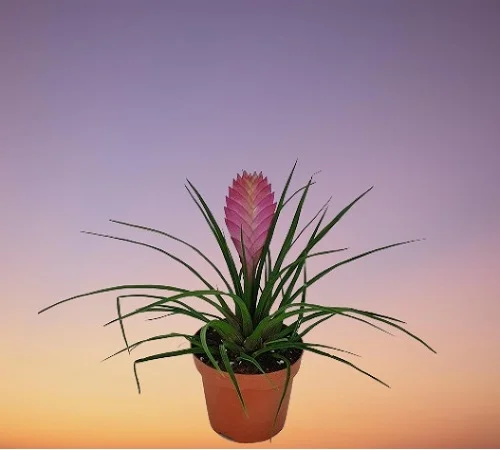
Temperature and Humidity
Pink Quill Bromeliad flourishes in an average warmth of 18-280C. To bring your Bromeliad to flower will require temperatures above 260C. Keep it away from cold drafts to prevent stunted growth.
Blue-flowered Torch Bromeliad requires a humidity of 60-70%. If the humidity is too low, the plant will respond with brown leaf tips. To elevate humidity, set the pot on a wet pebbele tray or use a cool mist humidifier. Make sure that there is good air circulation to prevent pests and disease infestation.
Light Requirements
Pink Quill Bromeliad grows best in bright light. Keep them away from direct sunlight to avoid scorching of the leaves.
Too little light will result in dark, soft, drooping leaves and lack of blooms. If the natural lighting is not adequate, use a grow light to supplement it.
Turn the pot regularly to ensure that the plant receives light on all sides for even growth and prevent unbalanced growth.
Watering
Like with other rosette Bromeliads, Pink Quill Bromeliads require the central 'vase' to be filled with water at all times. Empty and refill the 'vase' regularly to prevent growth of bacteria which may cause the water to become smelly.
Use only chlorine-free water as Blue-flowered Torch Bromeliads are sensitive to chlorine and other chemicals that may be dissolved in water.
Water the soil only when it dries to keep the roots moist; avoid soggy soil as it can result in root-rot and death of the plant
Fertilizer
Feed your Pink Quill Bromeliad with a liquid fertilizer (foliar feed) every 2 weeks in spring and summer for lush growth. Do not feed in fall and winter as growth is minimal and it may cause fertilizer burn in the bromeliad.
Potting Mix
The best potting mix for Pink Quill Bromeliad should be rich in organic matter, loose, free-draining, bark soil to prevent it from getting waterlogged while providing the required nutrients. Orchid potting mixes are ideal for these bromeliads.
Repotting
Repotting Pink Quill Bromeliad is not necessary as it grows slowly and once mature they flower and die leaving behind pups which can be used to propagate new plants.
Pot in a shallow, heavy pot to prevent it from toppling over as it can become top-heavy. Provide support to help keep it upright and prevent it from toppling over as it has a tiny root system. Check out these ceramic pots with drainage holes on Amazon.
Pruning
Pruning Pink Quill Bromeliad involves removal of dead leaves to keep the plant neat and tidy and to allow adequate room for the new plants to grow. Remove the dead foliage by cutting at the base with a clean knife or with a sharp, clean pair of pruning scissors.
Propagation
Pink Quill Bromeliads are propagated at the beginning of the growing season from offsets (pups) appearing at the base of the plant.
Propagating Pink Quill Bromeliads from offsets (pups)
When the offset (pup) is several months old or 1/3 to 1/2 the height of mother plant, cut it away from the mother plant.
Ensure the offset has some roots attached to it and plant the offset shallowly in loose, free-draining bark soil.
Use a shallow, heavy pot for the offset to prevent it from toppling over as it can become top heavy.
Place the set up in a warm, shaded place until the new Blue-flowered Torch Bromeliad is well established.
Ensure that the plant is well supported as it has a small root system and it may topple over.
Related Content: How to Propagate Bromeliads from Pups (Bromeliad Propagation)
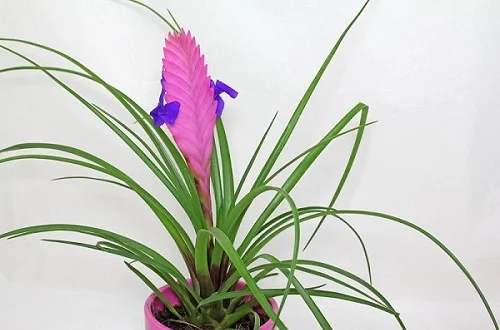
Pink Quill Bromeliad Problems & Solutions
Pink Quill Bromeliad problems are plant dying, brown leaf tips, drooping leaves, leaf spots, pests and diseases among other. Keep reading for more on these problems and their remedies.
Plant dying
Why is my Pink Quill Bromeliad dying?
If the Pink Quill Bromeliad has not flowered, then root-rot which is enhanced by soggy soil is the cause of its death. Always ensure that the pot has a drainage hole and that the soil is free-draining to prevent it from getting soggy.
If the Blue-flowered Torch Bromeliad has flowered, then rotting and death of rosette which bore the flower-stalk is natural to give room for the new plants. Remove the dead foliage by cutting at the base with a clean knife or a pair of scissors to keep the plant neat.
Dark, soft and drooping leaves
Inadequate light for Pink Quill Bromeliad is the cause of dark, soft and drooping leaves. Move the Bromeliad to a brighter spot where it will receive bright light or instal a grow light if the natural lighting is not sufficient.
Brown leaf tips
Pink Quill Bromeliads brown leaf tips are caused by too dry air; too low humidity. To raise humidity, set the pot on a wet pebble tray or use a cool mist humidifier. You may also grow the bromeliad in a well-lit bathroom, kitchen and other humid areas in the home.
Pale, brown patches on the leaves
Pink Quill Bromeliads pale, brown patches on the leaves are due to exposure to direct sunlight as it does not like to be exposed to direct sunlight. Shield it from direct sunlight or move it to a shadier spot.
Pests
Common pests in Pink Quill Bromeliad are scales and mealy bugs. Isolate the affected plant to prevent spread to the rest of plants. Treat it with neem oil or insecticidal soap as per the manufacturer's instructions.
You liked it? Share on social media.
Related Content
Amazon Associates Disclosure
Homeplantsguide.com is a participant in the Amazon Services LLC Associates Program, an affiliate advertising program designed to provide a means for sites to earn advertising fees by advertising and linking to amazon.com.
